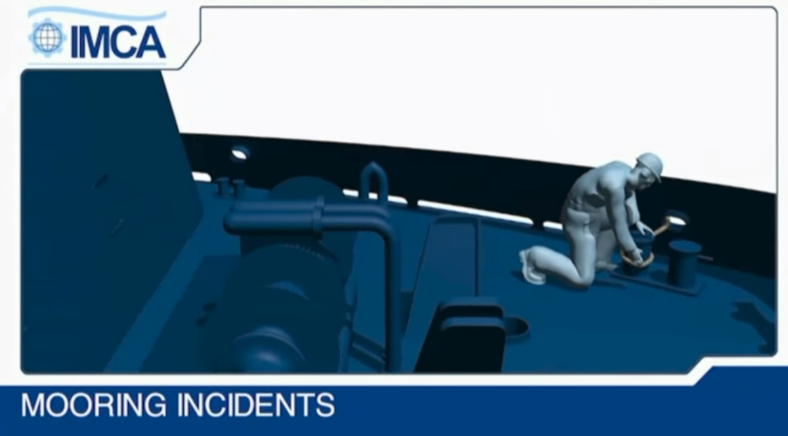Snapped mooring line
What happened?
A mooring line (stern line) was passed through the starboard chock from aft station while the vessel was entering the lock at a port. This mooring line was to be made fast to a bollard in the lock. The vessel was moving about 0.7 knots to be in position.
The line was slackened as the vessel moved forward. After about 15 meters, the line got stuck in the storage drum of the winch; this prevented it from paying out even when the winch was being turned to allow slackening of the line. Due to the forward movement of the vessel, the line was not able to carry the tension and snapped near the winch drum.
No crew were hit by the line parting. All crew were well clear from the snap back area.

What went wrong? What were the causes?
The mooring line got stuck in the storage drum of the winch.
Lessons learnt
Before any mooring operation, there should be:
- A pre-mooring tool box talk to ensure that mooring teams are aware of the potential hazards;
- A briefing of crew on mooring stations on what the rope/line configurations will be;
- A check of the condition of mooring equipment and lines before use.
Before mooring operations:
- Ensure mooring lines are laid out on the deck and remove any jammed or stuck ropes or lines in the drum or winch;
- Establish two-way communication between the mooring stations and the bridge;
- Ensure all persons involved in mooring operations wear appropriate personal protective equipment (PPE).
Mooring and unmooring a vessel is inherently a potentially dangerous operation and requires crews to be in full control of the operation and all associated equipment.
Members may wish to refer their crews to the following IMCA Safety promotional material and safety guidance:
Safety Event
Published: 31 January 2018
Download: IMCA SF 03/18
IMCA Safety Flashes
Submit a Report
IMCA Safety Flashes summarise key safety matters and incidents, allowing lessons to be more easily learnt for the benefit of all. The effectiveness of the IMCA Safety Flash system depends on Members sharing information and so avoiding repeat incidents. Please consider adding [email protected] to your internal distribution list for safety alerts or manually submitting information on incidents you consider may be relevant. All information is anonymised or sanitised, as appropriate.
IMCA’s store terms and conditions (https://www.imca-int.com/legal-notices/terms/) apply to all downloads from IMCA’s website, including this document.
IMCA makes every effort to ensure the accuracy and reliability of the data contained in the documents it publishes, but IMCA shall not be liable for any guidance and/or recommendation and/or statement herein contained. The information contained in this document does not fulfil or replace any individual’s or Member's legal, regulatory or other duties or obligations in respect of their operations. Individuals and Members remain solely responsible for the safe, lawful and proper conduct of their operations.
